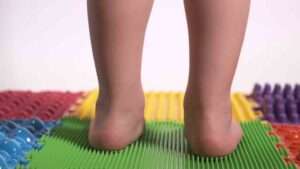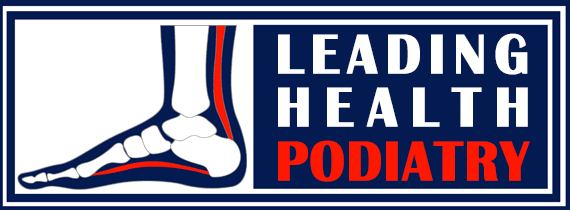Foot Care for Children with Down Syndrome
Feet in Down Syndrome: Understanding the Impact and Treatment Options
Down Syndrome is a genetic condition where a child inherits an extra copy of chromosome 21, leading to developmental and physical changes. While these changes are often well understood, foot-related conditions associated with Down Syndrome can be overlooked or left untreated. At Leading Health Podiatry, we emphasize the importance of early assessment and care to ensure children with Down Syndrome walk and play confidently, without the added burden of painful foot issues.

How Down Syndrome Affects the Feet
Each child with Down Syndrome is unique, but many share common foot-related traits. The primary characteristics that affect foot development in children with Down Syndrome include:
- Smaller and shorter limbs, fingers, hands, toes, and feet
- Low muscle tone and loose ligaments, leading to instability
- Flat, pronated feet
- Limited ankle range of motion
- Abducted gait (feet positioned wide apart)
- External hip rotation (feet pointed outward)
- Tendency to walk on toes, with inadequate heel contact
- Poor foot clearance and risk of tripping
- Balance challenges
The combination of these factors can result in common orthopedic problems, especially as the child begins to walk and gravity emphasizes the physiological differences. A podiatrist can help guide your child’s lower-limb development and improve coordination, helping to manage or prevent more serious complications.
Common Foot Conditions in Children with Down Syndrome
Some of the most frequent foot and leg conditions we see in children with Down Syndrome include:
- Flat feet causing sore, tired legs
- Hallux Abducto-Valgus (bunion deformities)
- Plantar Fasciitis (pain in the arch of the foot)
- Anterior knee pain from pronated feet
- Clawed toes and calluses
- Corns and ingrown toenails
- Footwear irritation due to insufficient shoe width
By assessing children early and monitoring their growth, podiatrists can prevent these conditions from worsening or becoming debilitating.
Treatment Options for Foot Issues in Down Syndrome
Treatment for foot-related issues in Down Syndrome is tailored to the child’s specific needs and can be painless. Key treatment options include:
Custom Foot Orthotics
Orthotics can help with flat feet and improve foot and ankle alignment. These can be made from soft materials like EVA rubber or 3D printed for customized support and comfort.Supra Malleolar Orthoses (SMOs)
The Surestep SMO is a flexible orthotic designed to stabilize children with hypotonia (low muscle tone). This device can improve balance, coordination, and standing independence while allowing natural development.General Foot Care
A podiatrist can treat hard skin, corns, and thickened toenails, which may cause discomfort. Regular care ensures that children can walk without pain.Wide and Supportive Footwear
Finding the right footwear that fits well and supports the feet can be a challenge. Leading Health Podiatry offers a range of comfort and medical-grade footwear and can even custom-make shoes if necessary.Surgery
For severe foot deformities like rigid bunions or other issues that don’t respond to non-invasive treatments, surgery may be considered. However, surgery is typically a last resort after exploring all conservative options.
Conclusion
Managing foot health in children with Down Syndrome is essential to improving their quality of life. Early intervention and regular podiatry care can help prevent or manage painful conditions, ensuring children develop their mobility, confidence, and comfort. If you suspect your child has foot-related issues, contact Leading Health Podiatry for a comprehensive assessment and personalized treatment plan.
